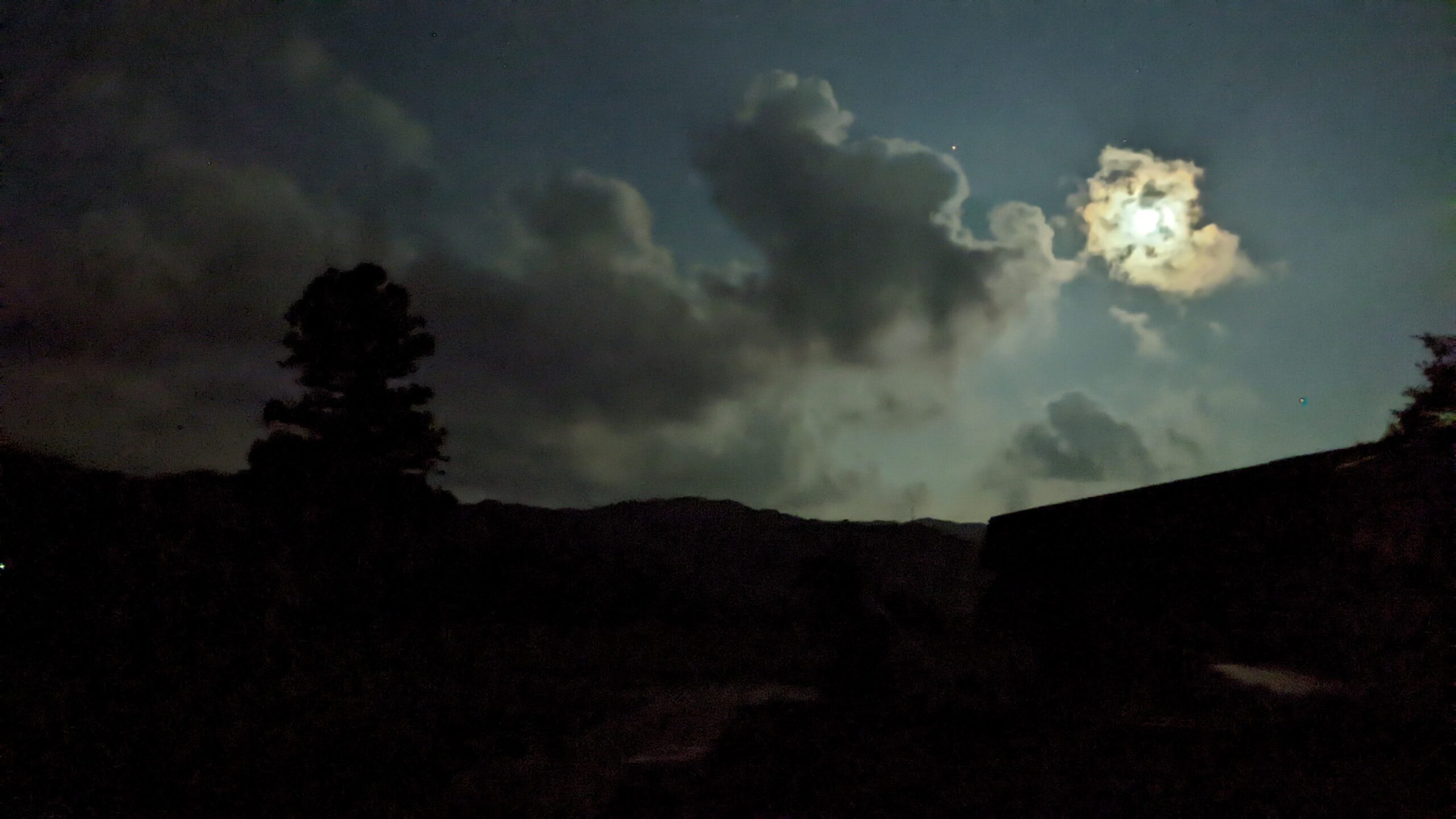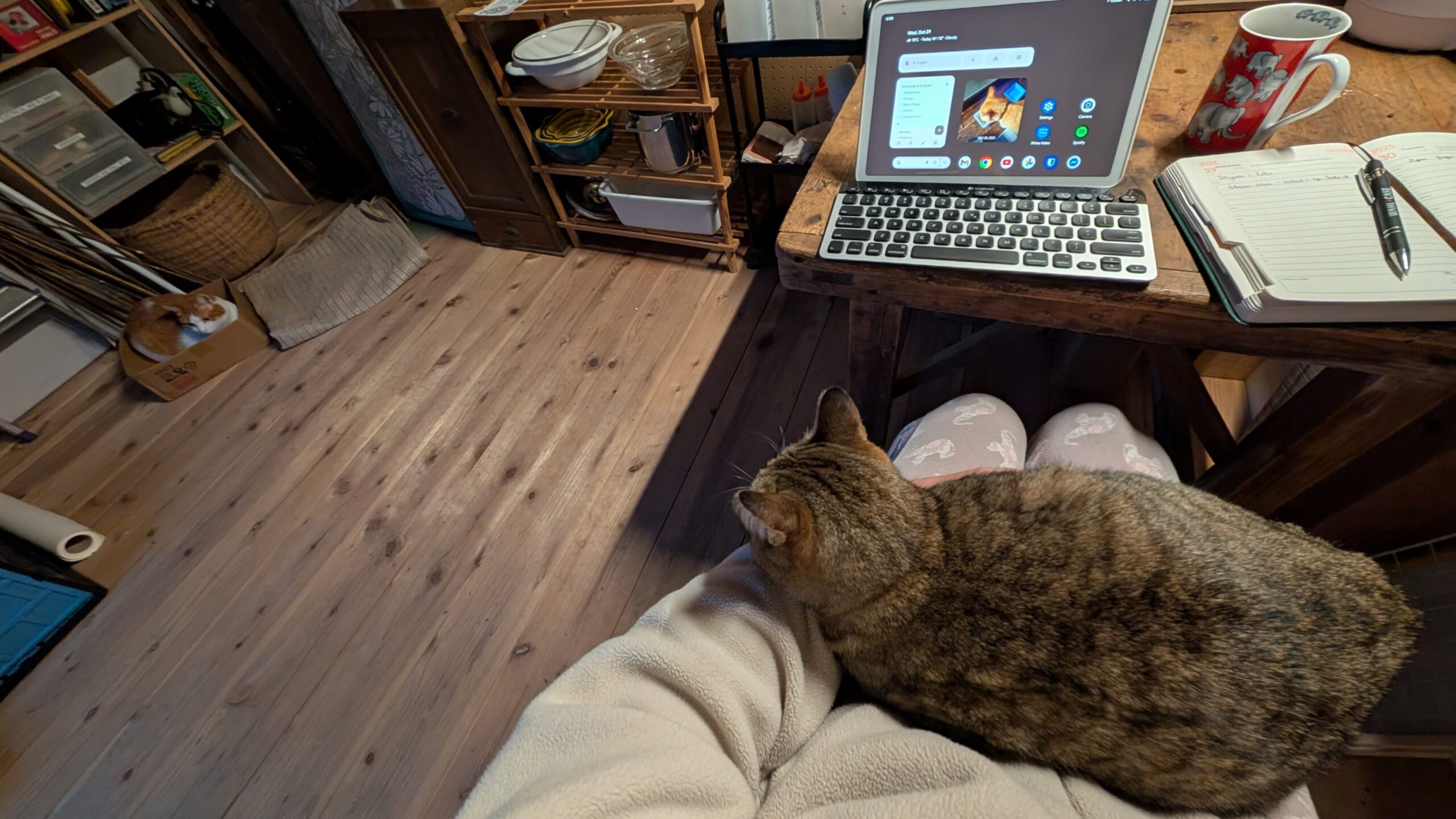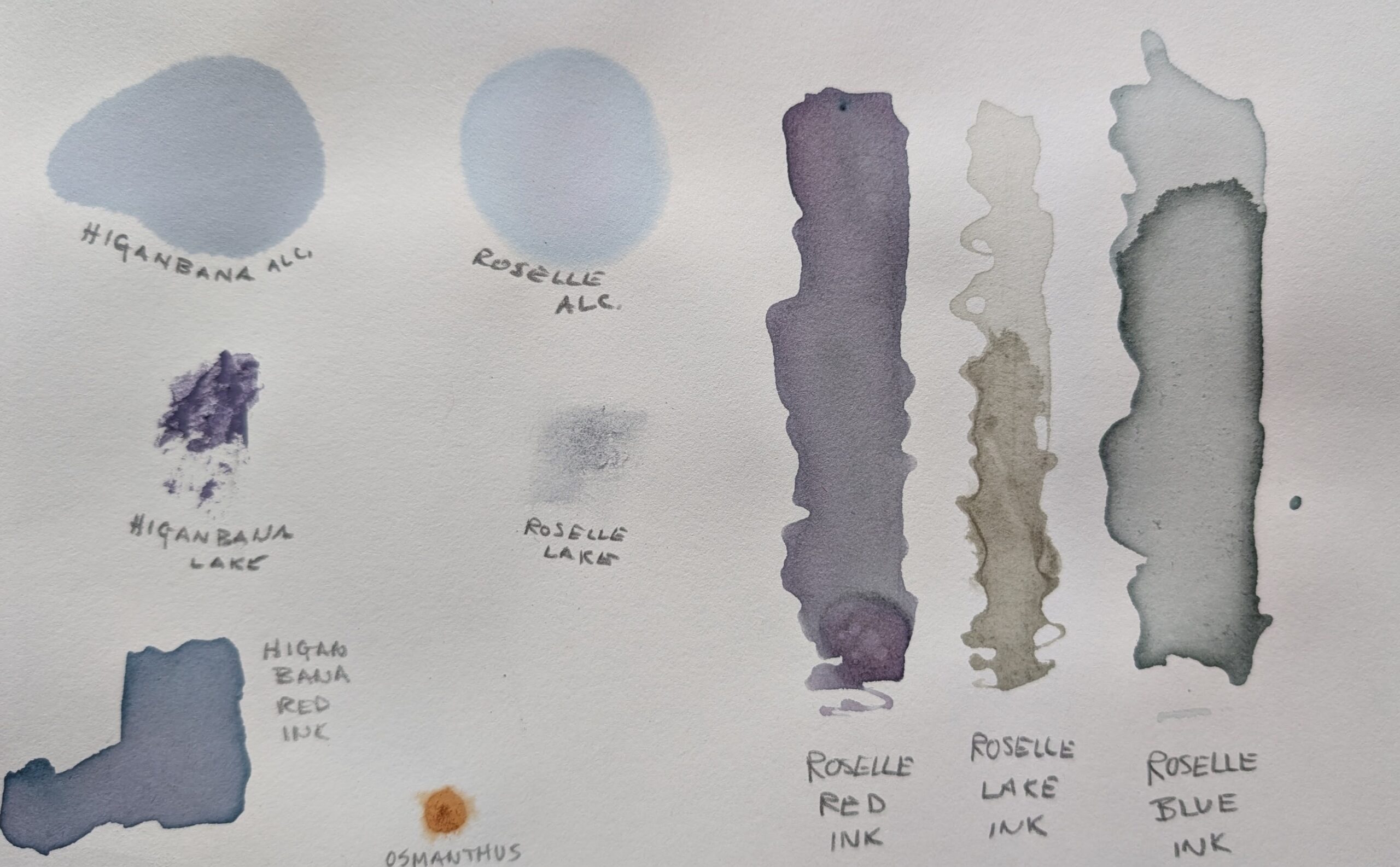The Perseids peaked this week and I went out a couple of times to watch for them. Mostly it was disappointing, though the night sky was pretty every time.
Tuesday night at Monaca, a bunch of us saw a gorgeous green streak. Then Kengo’s mobile kei-truck platform gave me and Hitomi spectacular sky views on the back roads, but no meteors on the short trip from Monaca to home.
And I saw one at 3:30 am on Wednesday. It was short, fat, and bright white. A brief sparkle across the sky above me. So pretty!
It made me wonder who else might have seen it. It was a time when most people in my neighborhood are sleeping. Would someone in a different time zone be able to see it?
Was I the only one to witness the last hurrah of that space debris?
This thought stuck with me and a couple of days later, I chatted with Claude.ai to figure out the visibility radius. The math was a bit more complicated than I expected – using trigonometry (my favorite branch of mathematics!) + various considerations for curvature and horizon angles – but eventually I produced a map.

Anyone in this circle could have seem the same meteor as me. It’s not as far as I imagined. There are about 65.2 million living people in that circle. Everyone is in the same time zone. So who else was stargazing at 3 am? It’s difficult to image that I am the only one on Earth who saw it.
Whether it was only me or 65.2 million others bearing withness, I want to thank that meteor: you were seen and I appreciated you.
In case you are curious about the calculations, here is how Claude explained how to find the visibility radius:
The lowest practical viewing angle for seeing meteors is typically considered to be about 10-15 degrees above the horizon. This is because:
- Atmospheric interference is greater near the horizon.
- Light pollution is often worse near the horizon.
- Terrestrial obstructions (trees, buildings, etc.) often block views close to the horizon.
Let’s use 15 degrees as our minimum practical viewing angle and 100 km as the height of the meteor. To find the visibility radius for a 15-degree viewing angle, we can use trigonometry:
tan(15°) = h / d
Where: h = height of the meteor (100 km) d = visibility radius we’re solving for. Rearranging the equation: d = h / tan(15°) d = 100 / tan(15°) d ≈ 373 km
To account for the Earth’s curvature, we need to subtract the distance to the horizon.
Distance to horizon = sqrt(2 * R * h + h^2) where R is Earth’s radius (6,371 km) and h is observer’s height (let’s assume 2 meters), so Distance to horizon ≈ 5 km
So our final practical visibility radius is about 368 km (373 km – 5 km).
Beyond this distance, the meteor would be too low in the sky for practical observation. An observer in Kamogawa would see it directly overhead. Observers up to about 368 km away could see it at least 15 degrees above their horizon






